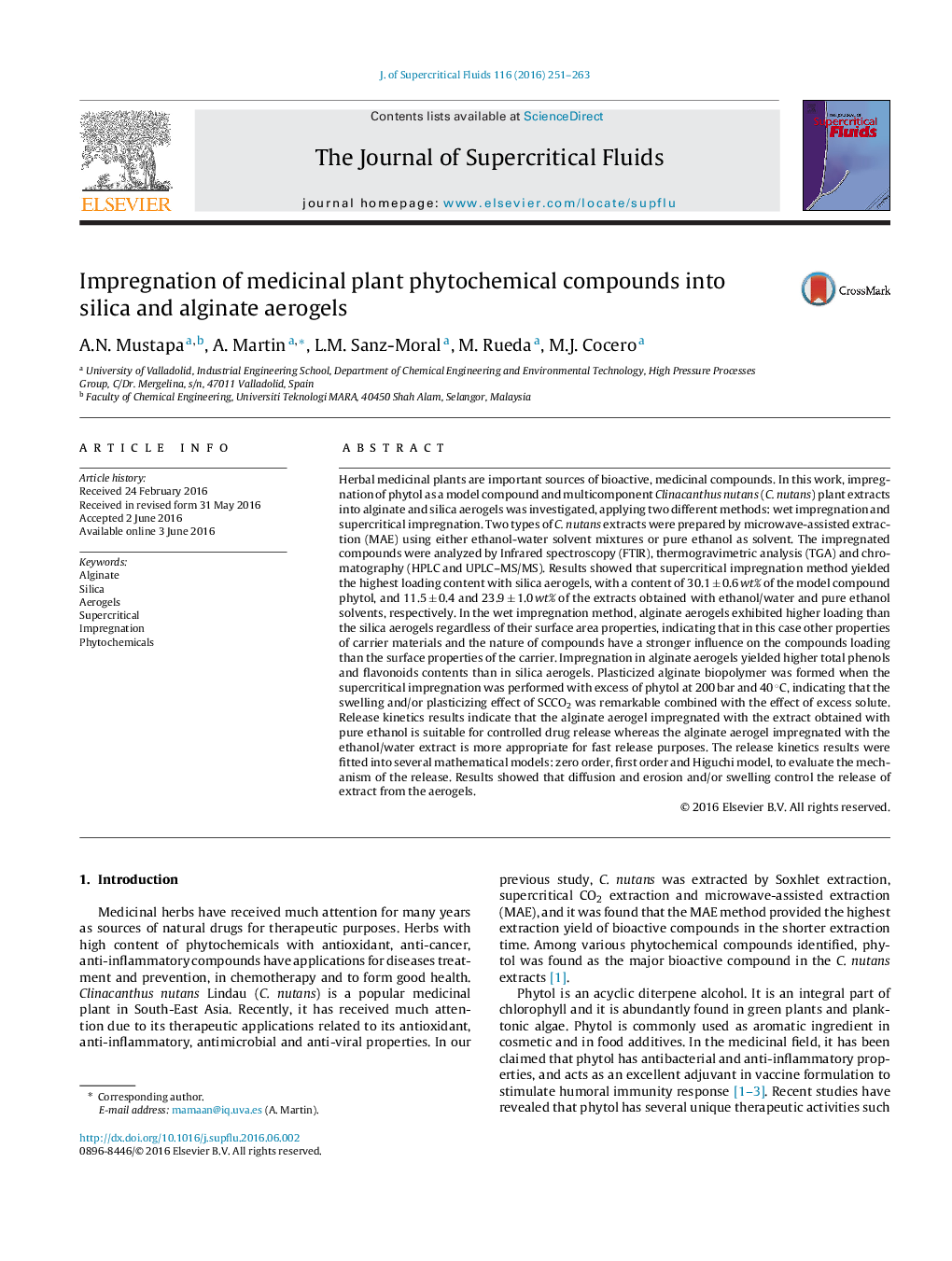| کد مقاله | کد نشریه | سال انتشار | مقاله انگلیسی | نسخه تمام متن |
|---|---|---|---|---|
| 229972 | 1427361 | 2016 | 13 صفحه PDF | دانلود رایگان |
• Phytol and C. nutans extracts were impregnated into silica and alginate aerogels.
• Higher phytol loading in silica aerogel by SC method than by wet impregnation.
• Alginate showed greater phytol loading than silica aerogels by wet impregnation.
• Higher phenols and flavonoids content obtained in alginate than in silica aerogels.
• Alginate showed better C. nutans release kinetics than t silica aerogels.
Herbal medicinal plants are important sources of bioactive, medicinal compounds. In this work, impregnation of phytol as a model compound and multicomponent Clinacanthus nutans (C. nutans) plant extracts into alginate and silica aerogels was investigated, applying two different methods: wet impregnation and supercritical impregnation. Two types of C. nutans extracts were prepared by microwave-assisted extraction (MAE) using either ethanol-water solvent mixtures or pure ethanol as solvent. The impregnated compounds were analyzed by Infrared spectroscopy (FTIR), thermogravimetric analysis (TGA) and chromatography (HPLC and UPLC–MS/MS). Results showed that supercritical impregnation method yielded the highest loading content with silica aerogels, with a content of 30.1 ± 0.6 wt% of the model compound phytol, and 11.5 ± 0.4 and 23.9 ± 1.0 wt% of the extracts obtained with ethanol/water and pure ethanol solvents, respectively. In the wet impregnation method, alginate aerogels exhibited higher loading than the silica aerogels regardless of their surface area properties, indicating that in this case other properties of carrier materials and the nature of compounds have a stronger influence on the compounds loading than the surface properties of the carrier. Impregnation in alginate aerogels yielded higher total phenols and flavonoids contents than in silica aerogels. Plasticized alginate biopolymer was formed when the supercritical impregnation was performed with excess of phytol at 200 bar and 40 °C, indicating that the swelling and/or plasticizing effect of SCCO2 was remarkable combined with the effect of excess solute. Release kinetics results indicate that the alginate aerogel impregnated with the extract obtained with pure ethanol is suitable for controlled drug release whereas the alginate aerogel impregnated with the ethanol/water extract is more appropriate for fast release purposes. The release kinetics results were fitted into several mathematical models: zero order, first order and Higuchi model, to evaluate the mechanism of the release. Results showed that diffusion and erosion and/or swelling control the release of extract from the aerogels.
Figure optionsDownload as PowerPoint slide
Journal: The Journal of Supercritical Fluids - Volume 116, October 2016, Pages 251–263
